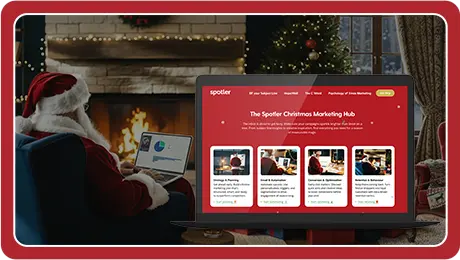Christmas Marketing Hub
Cross-sell
Cross-sell…
You’ve probably seen it in action without even noticing. You’re buying a new laptop online, and just before you check out, you get a suggestion: “Want to add a wireless mouse or laptop sleeve?” That’s cross-selling in action, offering a related product or service that complements what your customer is already buying.
Cross-selling encourages customers to purchase additional, related products alongside their main purchase. It’s a classic revenue-boosting tactic across industries from retail and e-commerce to software and financial services. The goal isn’t to push random extras but to recommend goods that make sense together. If done well, it feels helpful, not pushy.
It works best when it’s driven by data and customer insight. Randomly throwing a list of options at users won’t move the needle. But if your CRM tells you that customers in finance often buy Service A and Service B together, that’s a clue. Smart cross-selling leans on segmentation, user behaviour, and even predictive modelling to surface timely, relevant offers.
Importantly, cross-selling isn’t the same as upselling. While the two are often lumped together, they’re different tactics. Upselling is about encouraging a higher-value version of the product someone is already using (e.g. “Upgrade to Premium for more storage”). Cross-selling is about offering an additional product or service that complements.
Keep expanding your knowledge
The Great British Split Test 2025
Does an all-caps subject line grab attention? Where should you put your CTA for max impact? See what Spotler tested on their own audience.
“Breakup emails”: how to re-engage your coldest subscribers
Every marketer has a segment they avoid looking at too closely: the cold list.
Love at first click: Pre and Post Valentine’s campaigns that deliver real revenue
With the right pre and post Valentine’s campaigns, you can lift revenue, strengthen your data and turn one off shoppers into loyal customers. Join us to find out how!
Events without the Hassle: All the Data, None of the Chaos
Get more out of the events you’re already running. Combine efficiency with a professional experience for your attendees and stop leads slipping through the cracks and follow up with ease.
Become the Brand AI Recommends First. Understanding Citation Authority for 2026
One of the biggest emerging opportunities is citation analysis and citation building for AI platforms. Find out how you can get AI to cite your brand via GEO.
Galentine’s Day: the fastest growing seasonal trend marketers should pay attention to
Galentine’s Day has grown from a small cultural moment into one of February’s most commercially interesting trends.
B2B Valentine’s ideas: campaigns that will not make tour audience cringe
Heart emojis and pink colour palettes are less likely to move your business customers. But there are other ways to make use of Valentine’s Day.
How to use personalisation without making it creepy this Valentine’s Day
Buyers want the personal touch, but they don’t want you too close. How do you get the balance right this Valentines Day?
Love, loyalty and LTV: turning Valentine’s shoppers into year-round customers
How do you turn your Valentine’s shoppers from spring fling to long-term relationship?
7 ways to make emails more interactive in 2026
Inboxes are more competitive than ever; it is estimated that 376.4 billion emails were sent every day in 2025.

